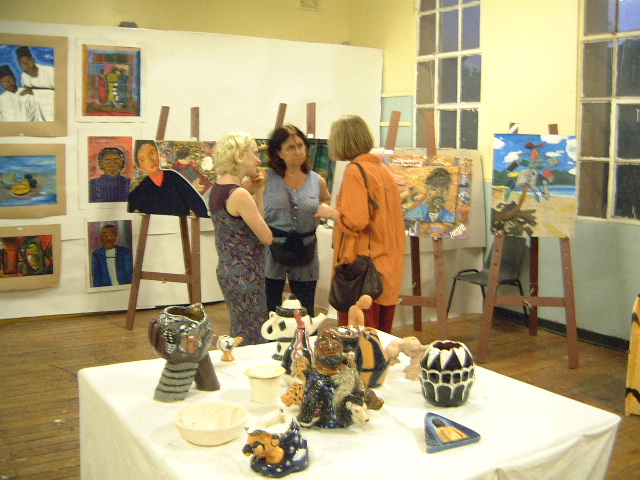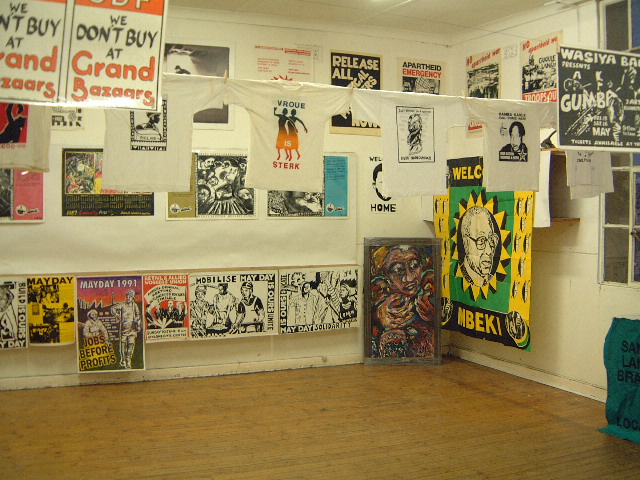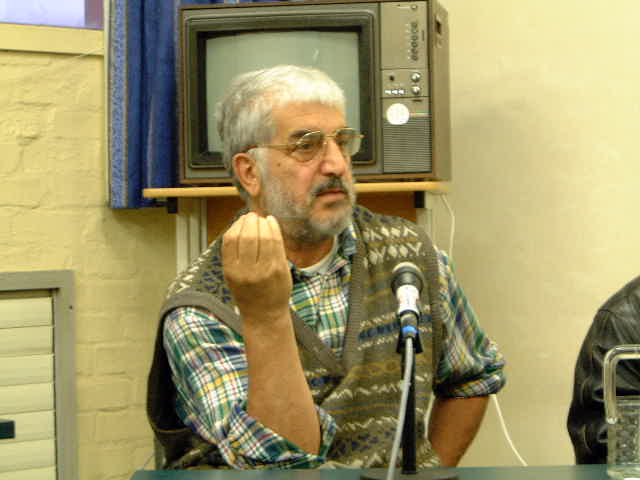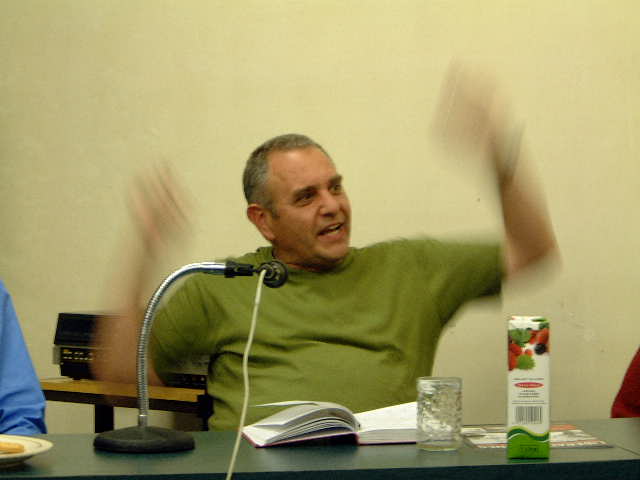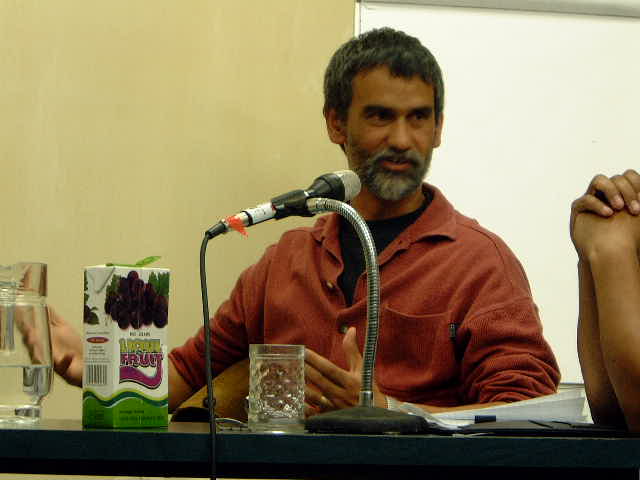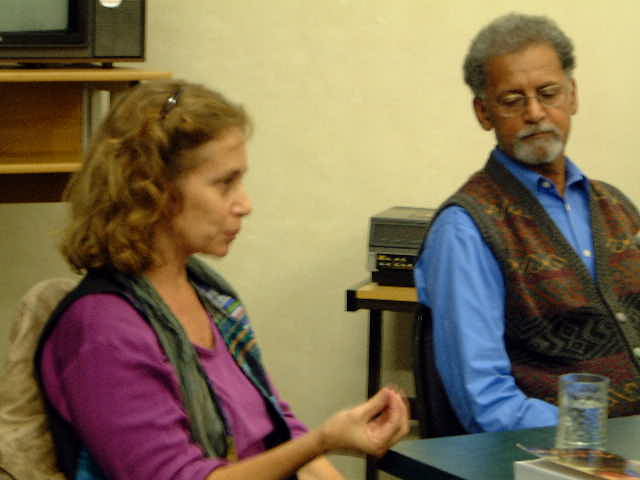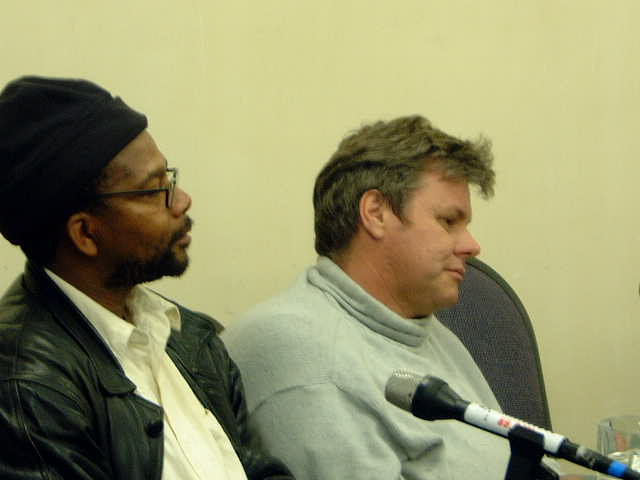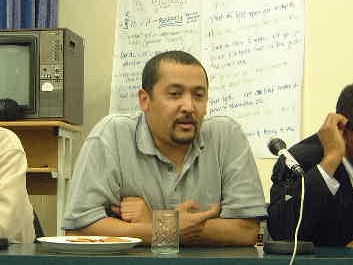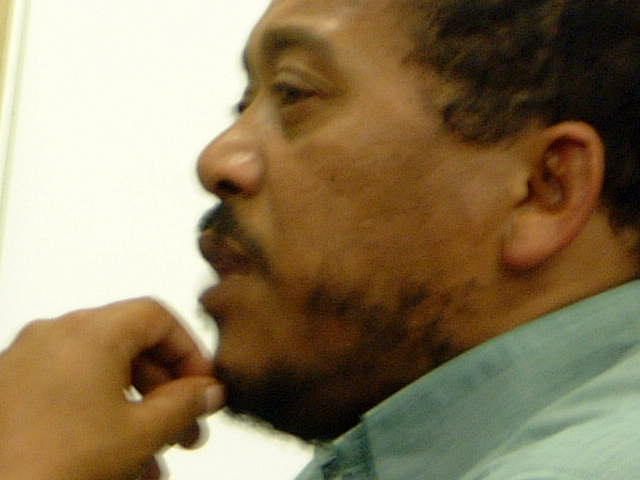Liberating Memories: Remembering the 80's
UCT Students in the mid 1980s. Photo from the Mayibuye Archive
Why were the 80s such an important moment for culture and its role in politics and social change? Why is it necessary to revisit the time? What can learn from it? In 2003, the BLAC Project initiated a project to commemorate the period in Cape Town, to document it and to add to the archive.
The 80's was a tumultuous time internationally. It was a period of resistance against oppression that ushered in important societal changes. The post World War two period ushered in a new sense of awareness concerning the rights of humans, individually and collectively, many countries sought out and achieved their independence from colonial powers. In the US the civil rights movement reached its peak in 1968 with the signing of the civil rights act, the end of a hard 12 year struggle. 1968 become one of the most significant years of the twentieth century, with Paris, Rio De Janeiro, Prague, Jamaica, and Mexico all having major upheavals. The year saw a significant shift in consciousness around the globe. It was followed by important wins for women's, gay and other minority rights. The 80's was a deepening of this changed consciousness.
Global Changes
The deepening and widening of consciousness can be seen in a number of key moments of resistance. Amongst these were: South Korea’s Gwangju Democratic Uprising, the 8-8-88 uprising in Myanmar, the Intifada in Palestine and Brazil’s Movement of Landless Rural Workers. There was also saw the rise in Poland of the workers union Solidarity and of the absurdist Orange Alternative, this began the decade long challenge againsr the Soviet Union by many eastern bloc countries, culminating in the fall of the Berlin Wall in 1989. In the Philippines a 3 year non-violent struggle led to the successful overthrowing of the dictatorship of Marcos, The Peoples Power Revolution was bolstered by music, peaceful protests and the use of video tapes and cassettes to share revolutionary information. This was after all a period of important technological breakthroughs, enabling cheaper and more portable forms of mass communication. It was also the decade that saw the height of the community arts movement in various countries (from its beginnings in the late 60s), and a wider spreading of ideas around cultural democracy. Arts centers were opened in many communities in Western Europe and artists and cultural workers finessed ways of working with puppets, and using screen-printing for posters, T Shirts and banners, for the numerous protests of the time. There was a growth too in the use of theatre for social change drawing on Augusto Boal's Theatre of the Oppressed approach. The Community arts movement effectively created a space for participatory public dialogue innovatively using the arts and alternative media towards these ends.
Gaborone 1982
In South Africa, change seemed far away. Buoyed by global shifts the 80s saw an intensifying of the struggle for freedom. It came with a cost as the Apartheid state pushed back with successive states of emergency and the liberal use of violence, arrests, assassinations and intimidations. For cultural practitioners 1982 is a critical year. It was the year of a historic Culture and Resistance Conference and Festival in Gaborone, Botswana called by the Medu Arts Ensemble. This important event, chaired by the influential (and later assassinated) Thami Mnyeli brought together cultural workers and activists from around South Africa who were able, over the days, to share knowledge and impart practical skills. Medu's emancipatory ideas were inspiring and would shift cultural practises in South Africa considerably - re-orientating the artist role in respect to society.
"our art should speak to the immediate community, to the people who brought us up, who speak to us, who are living through what has made us as we are. The arts should build self -awareness and self-image, link our people's experiences, create new understandings of our lives, and pass on these understandings. From this should come a vision of how to take our community and our people forward."
Community Arts in South Africa
The community arts movement in South Africa, which started in the 60s was set up, heavily influenced, and controlled by white liberals, although its main consitituency were black. However from '82 onwards, black cultural practitioners were able to find confidence in their own voice, buoyed by the experience of meeting important leading black artists, and learning from them and others like themselves. They began to recognize themselves, not as lone genius artists, but as facilitators, an integral part of a communities struggle. Returning back to their cities in South Africa, participants started new initiatives. Silk screening was especially important and was one of the key skills shared in the workshop program of the Gaborone conference.
Lionel Davis at CAP Media. Photo from the CAP Archives
In Cape Town, CAP Media was set up under the Community Arts Project and became the main provider of skills and space to enable trade unions, women's groups, cultural groups, civics and others who were involved in the freedom struggle, to produce vibrant material used in protest actions. The Community Video Education Trust, using video to document and comment on the change process, had been active from 1976, and ramped up its activities during this time, sharing a building with a newcomer, CASET, the forerunner to Bush Radio, which used audio cassettes to share banned material. Once the State clamped down repressively, it is these organisations, as well as the visual artists, musicians, poets, writers, dancers, theatre and film makers around them, who would be the only ones left with voice. Although they too faced numerous challenges, they used this voice well, to inspire and to mobilise. In the final hard days of Apartheid, it is the artists and other cultural workers who kept the flames of hope burning bright.
The release of political prisoners, including Nelson Mandela and the unbanning of the ANC and other political parties in 1990 happened very quickly. Long awaited change for South Africa took place almost unexpectedly, it felt like a euphoric dream. After the 1994 elections, many anti-apartheid and community structures slowly fell apart, through a change of relevance or lack of financial support. This was true also in the cultural sector.
Cover for the Liberating Zones Brochure
Liberating Zones
Liberating Zones (2003) served as an timely initiative coming 21 years post Gaborone. It commemorate an important and impactful time that flowed from the Culture and Resistance Conference. Liberating Zones took place as a short festival in partnerships with key cultural organisations each with a link to the 80s in some form - Robben Island Museum, the District Six Museum, Bush Radio and the Community Arts Project. It included dialogue sessions with speakers from various sectors of the 80s, reflecting on key issues as well as an exhibition and performance event with local music and poetry. An aspect, Rendezvous with History, was recorded for radio and aired on Bush Radio, curated by Trevor Oosterwyk.
The dialogues held during the festival reflected on the ways in which the 80s shaped the mindsets, and radically impacted on the cultural production, of so many individual cultural workers and institutions. For those involved in the struggle for change, this was an individually and collectively powerful time, which brought them to a greater awareness of their responsibility as humans with agency. It was, less romantically, a complex and difficult time, sometimes fractious. Ones personal and collective safety was on the line if the choice was made to be engaged. Yet it was and remains a powerful moment, a moment worth remembering, learning from and celebrating.


